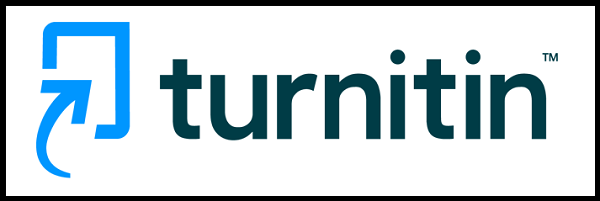Formulation of Anti Acne Gel of Jasmin Flower Extract (Jasminum sambac L)
DOI:
https://doi.org/10.55181/ijms.v10i1.413Keywords:
gel, anti-acne, jasmine flower, Jasminum sambacAbstract
Jasmine flowers contain eugenol, linalool, metil salisilat, benzil alkohol and indol. These compounds can inhibit the growth of Propionibacterium acne which cause acne at a concentration of 30% with an inhibition zone of 5.58 mm. This study aims to determine the formulation of jasmine flower extract (Jasminum sambac L) acne gel and evaluate its physical properties. Ethanol extract from jasmine flower was obtained by maceration method using 96% ethanol solvent. The gel formulation was made with 30% and 35% concentrations of jasmine flower ethanol extract, carbomer 940 base, triethanolamine (TEA), methylparaben, propylene glycol and distilled water. Evaluation of physical characteristics include organoleptic test, homogenity, pH test, spreadability and shelf time. The results showed that the formulation of jasmine flower extract acne gel with 35% extract concentration produced good physical properties compared to the gel with 30% concentration. The jasmine flower extract gel made with carbomer 940 base has a distinctive aroma of jasmine flower extract, homogeneous physical properties, an average pH value of 5, and a fairly high viscosity. Jasmine flower extract gel with 30% and 35% concentrations had a spreadability of 3.37 cm and 3.39 cm.References
Andini, T., Yusriadi, Y., & Yuliet. (2017). Optimasi pembentuk film polivinil alkohol dan humektan propilen glikol pada formula masker gel peel off sari buah labu kuning (Cucurbita moschata duchesne). Jurnal Farmasi Galenika, 3(2), 165–173. https://doi.org/10.22487/j24428744.2017.v3.i2.8773
Anggraini, D., Rahmawati, N., & Hafsah, S. (2013). Formulasi gel antijerawat dari ekstrak etil asetat gambir. Jurnal Penelitian Farmasi Indonesia, 1(2), 62–66. https://pfi.ejournal.unri.ac.id/index.php/FPFI/article/view/1248
Anief, M. (2006). Farmasetika. Gadjah Mada University Press.
Fitriansyah, S., Wirya, S., & Hermayanti C. (2016). Formulasi dan evaluasi spray gel fraksi etil asetat pucuk daun teh hijau (Camelia sinensis Kuntze) sebagai antijerawat. Pharmacy, 13(2), 202–216. http://jurnalnasional.ump.ac.id/index.php/PHARMACY/article/view/1257
Garg, G. A. D. dan S. A. (2002). Spreading of Semisolid Formulation?: An Update. Pharmaceutical Technology.
Kindangen, O. C., Yamlean, P. V. Y., & Wewengkang, D. S. (2018). Formulasi gel antijerawat ekstrak etanol daun kemangi (Ocimum basilicum L.) dan uji aktivitasnya terhadap bakteri Staphylococcus aureus secara in vitro. Ejournal.Unsrat.Ac.Id, 7(3). https://ejournal.unsrat.ac.id/index.php/pharmacon/article/view/20505
Kumesan, Y., Yamlean, P., Pharmacon, H. S.-, & 2013, Formulasi dan Uji Aktivitas Gel Antijerawat Ekstrak Umbi Bakung (Crinum asiaticum L.) terhadap Bakteri Staphylococcus aureus secara in Vitro. Ejournal.Unsrat.Ac.Id. Retrieved December 8, 2022, from https://ejournal.unsrat.ac.id/index.php/pharmacon/article/download/1552/1245
Mariyana, T., Rosdiana, R., Kartini, P. B., Raya, J. C., & Kartini, B. (2022). Uji Aktivitas Antibakteri Dari Ekstrak Metanol Bunga Melati (Jasminum Sambac L.) Terhadap Staphylococcus Aureus Dan Formulasi Dalam Sediaan Gel Anti Jerawat. In PHRASE Pharmaceutical Science Journal (Vol. 2, Issue 2). http://openjournal.wdh.ac.id/index.php/Phrase/index
Naibaho, O., Yamlean, P. V., & Wiyono, W. (2013). Pengaruh basis salep terhadap formulasi sediaan salep ekstrak daun kemangi (Ocimum sanctum L.) pada kulit punggung kelinci yang dibuat infeksi. Pharmacon, 2(2), 2302–2493. https://ejournal.unsrat.ac.id/index.php/pharmacon/article/download/1553/1246
Oktaviani, T. (2020). Uji Aktivitas Bunga Melati Sebagai Antimikroba Terhadap Pertumbuhan Bakteri Propionibacterium acne Penyebab Jerawat [Skripsi]. STIK Siti Khadijah.
Pelen, S., Wullur, A., & Citraningtyas, G. (2016). Formulasi Sediaan Gel Antijerawat Minyak Atsiri Kulit Batang Kayu Manis (Cinnamomum Burmanii) Dan Uji Aktivitas Terhadap Bakteri Staphylococcus Aureus. Ejournal.Unsrat.Ac.Id, 5(4). https://ejournal.unsrat.ac.id/index.php/pharmacon/article/view/13984
Rowe, R., Sheskey, P., & Quinn, M. (2009). Handbook of Pharmaceutical Excipients.
Saragih, D., Opod, H., e-Biomedik, C. P.-, & 2016, undefined. (2016). Hubungan tingkat kepercayaan diri dan jerawat (Acne vulgaris) pada siswa-siswi kelas XII di SMA Negeri 1 Manado. Ejournal.Unsrat.Ac.Id, 4(1). https://ejournal.unsrat.ac.id/index.php/ebiomedik/article/view/12137
Sutanto, R. (2013). Derajat Penyakit Acne Vulgaris Berhubungan Positif Dengan Kadar MDA. Ilmu Biomedik Udayana.
Swastika NSP, A., Mufrod, & Purwanto. (2013). Antioxidant Activity Of Cream Dosage Form of Tomato Extract (Solanum lycopersicum L.). Traditional Medicine Journal, 18(3), 2013.
Ulaen, S. P. J., Banne, Y., Suatan, R. A., Farmasi, J., Kesehatan, P., & Manado, K. (2012). Pembuatan salep anti jerawat dari ekstrak rimpang temulawak (Curcuma xanthorrhiza Roxb.). https://ejurnal.poltekkes-manado.ac.id/index.php/jif/article/download/275/244
Umah, K., Community, O. H.-J. of N., & 2017, undefined. (2017). Masker Madu Berpengaruh pada Penyembuhan Acne vulgaris (Honey Mask Influence on Healing Acne Vulgaris). Journal.Unigres.Ac.Id, 08, 179–187. http://journal.unigres.ac.id/index.php/JNC/article/view/432
Wahyu, U., Cahyo Prabowo, W., Amir Masruhim Laboratorium Penelitian dan Pengembangan FARMAKA TROPIS Fakultas Farmasi Universitas Mulawarman, M., & Timur, K. (2016). Prosiding Seminar Nasional Tumbuhan Obat Indonesia Ke-50, Samarinda.
Wasitaatmaja, S. M. (1997). Penuntun Ilmu Kosmetik Medik. UI Press.
Downloads
Published
How to Cite
Issue
Section
License
Copyright (c) 2023 Vina Agustin, Nur Ismiyati, Rini Sulistyawati

This work is licensed under a Creative Commons Attribution-NonCommercial-ShareAlike 4.0 International License.













